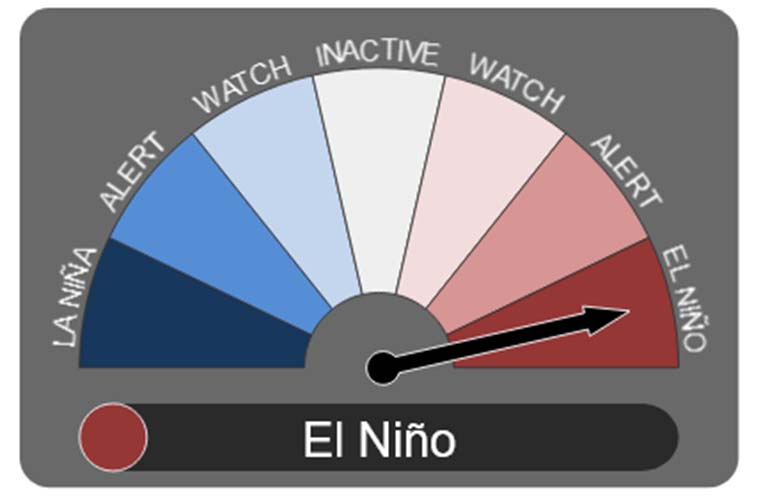
TWO major weather shifts have been officially declared as of 19 September, each one amplifying the effects of the other as we move into spring and a very hot summer.
“An El Niño and a positive Indian Ocean Dipole (IOD) are underway – the declaration of these events, and their concurrence over spring, reinforces the Bureau’s long-range rainfall and temperature forecasts, which continue to predict warmer and drier conditions for much of Australia over the next three months,” says the Bureau of Meteorology.
 Advertise with News of The Area today.
Advertise with News of The Area today.It’s worth it for your business.
Message us.
Phone us – (02) 4981 8882.
Email us – media@newsofthearea.com.au
El Nino, which cyclically pushes moisture eastwards across the Pacific Ocean, away from Australia’s east coast, typically causes droughts that can last for years.
On the western side of the continent the IOD exists as a mirror-image to El Nino, which, in its declared ‘positive’ stance, pushes moisture westwards towards Africa.
A ‘positive IOD’ also typically means higher temperatures begin to sweep down through the relatively flat continental interior, reaching right across and into the south-east, too.
This presents a double-whammy of these major weather patterns for the first time in eight years, resulting in high temperatures of the positive IOD combining with the dry effects of El Nino to spell a perfect scenario for drought and bushfires.
ABC News has indicated that the last ‘positive’ IOD was in 2019, and caused heat that compounded the lingering effects of the extended El Nino drought of 2014-2016, leading directly to the catastrophic conditions of the 2019-2020 bushfires.
The relatively long La Nina period (2020-2023), the heavy and incessant rains of which we all endured through the COVID pandemic, has caused significant vegetation to grow, which will now begin drying out to become bushfire fuel as El Nino settles in.
“Climate model outlooks suggest this El Niño is likely to continue until at least the end of the southern hemisphere summer 2023–24,” is the Bureau’s forecast, and more information can be found on the Bureau’s website at http://www.bom.gov.au/climate/enso/outlook/.
By Thomas O’KEEFE
